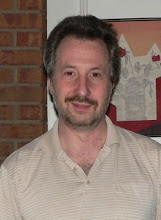Danish hockey fans had a rare opportunity to watch a parade of the biggest Swedish NHL stars when the Icebreakers visited Copenhagen 5-6 August 2009.
On 5-6 August, the Icebreakers, a charity team formed by Peter Forsberg and Markus Näslund in 2002, visited
Copenhagen to play two games against an All-Star Danish teams and the local team of Rødovre. It was the first time in its history, the Icebreakers played outside Sweden and Finland.
 Danish Frans Nielsen vs. Russians. 1997 World Championship
Danish Frans Nielsen vs. Russians. 1997 World Championship
Icebreakers' featured an impressive lineup of some of the biggest Swedish NHL stars:
Peter Forsberg,
Markus Näslund,
Henrik Zetterberg,
Nicklas Bäckström, the Sedin twins,. Indeed, in both games, the Icebreakers played with a superline centered around Forsberg with Bäckström, Näslund and Zetterberg, and this line received plenty of icetime. The Danish Allstar team included NHL'ers Frans Nielsen (NY Islanders) and Peter Regin (Ottawa Senators) as well as North American legionars Sebastian Dahm and Morten Madsen. Unfortunately, the Danish teams missed some of the biggest NHL prospects, Mikkel Bødker (Phoenix Coytotes), Lars Eller (St. Louis Blues)and Philip Larsen (Dallas Stars). If available, Bødker and Eller would have played both games as they grew up with Rødovre.
Great hockey players, exciting hockey, but what to do between the games? Do not worry, my friends. Actually a lot of fun and interesting places to watch around! Let's have a look.
Copenhagen may take you farther than the Danish capital, Scandinavia’s largest city. You just might find yourself transported to a place where Hans Christian Andersen indulged your childhood fantasies of red shoes, ugly ducklings, Thumbelina or the Little Mermaid, still perched precariously in the harbor.
 "WONDERFUL, WONDERFUL..."
"WONDERFUL, WONDERFUL..." One of this city’s greatest attributes is its ability to enchant visitors with its charm and cordiality, engulfing them with a welcome that is more reminiscent of a small town than a cosmopolitan metropolis. A stroll along Nyhavn (“New Harbor”), with its beckoning cafes, may entice you to taste some of the Danish specialties, such as smorrebrod (open sandwiches), polser (hot dogs) and frikadeller (meatballs), along with a cold Danish beer. Bring your skates for a dash around the central ice rink or enjoy the variety of stores along the Stroget, a pedestrian shopping area connecting east and west Copenhagen.
The kid in you – and with you – will clamor for Tivoli Gardens, one of the world’s best loved amusement parks. Since 1843, the architecture of this fairytale-come-to-life has bid tourists and locals alike to surrender to the charms of its merry-go-round, theatres and gourmet restaurants, all situated in the heart of the city.
 ROYAL WATCHING…AND A UNIQUE 'TWOFER'
ROYAL WATCHING…AND A UNIQUE 'TWOFER'Whatever you do, don’t miss the historic Changing of the Guards. Every day at noon, crowds gather at Amalienborg Palace in the city center for the splendid pageantry of this colorful event. Queen Margrethe, her husband Prince Henrik, and the Crown Prince Frederik, live in the palace, which flies the queen’s colors when she is in residence.
Denmark’s imperial history is also evoked by Christiansborg, seat of the Folketinget (Danish Parliament) for nearly a thousand years, as well as the Supreme Court, the Prime Minister’s Office and the Royal Reception Rooms. People with a yen to see the crown jewels will enjoy the Royal Danish Chronological Collections (De Danske Kingers Kronologiske Samlinger) in Rosenborg, summer palace of the 17th-century King Christian. With roots dating back to 1699, the beautiful gardens of Frederiksberg enhance the palace museum that honors King Frederik V.
And what’s better than the Danish side of Scandinavia might just be the Swedish side, connected since 2000 by the Oresund Bridge. The link between Copenhagen and Malmo is a bridge-tunnel accessible by car or train, enabling people to go from one country to the other in less than 20 minutes.
 SPORTS
SPORTS
Copenhagen has a wide variety of sport teams. The two major football teams are Brøndby IF and FC København. Brøndby IF plays at Brøndby Stadium in Brøndby and FC København plays at Parken in Østerbro, Copenhagen. Notable Copenhagen teams playing at the second highest level in Danish football (the Danish 1st Division) include Lyngby BK, AB, HIK, Frem, Brønshøj, Fremad Amager and Skjold.
Copenhagen also has three ice hockey teams: Rødovre Mighty Bulls, Herlev Hornets and Nordsjælland Cobras.
There are a lot of handball teams in Copenhagen. FC København owns both a women's and a men's team, which have the same name and logo. They were formerly known as FIF. Of other clubs playing in the "highest" leagues there are; Ajax Heroes, Ydun, and HIK (Hellerup).
Rugby union is also played in the Danish capital with teams such as CSR-Nanok, Copenhagen Scrum, Exiles, Froggies and Rugbyklubben Speed. The Danish Australian Football League, based in Copenhagen is the largest Australian rules football competition outside of the English speaking world.
Copenhagen is also home to a number of Denmark's 40-odd cricket clubs. Although Denmark has been an associate member of the International Cricket Council since 1966, the sport is not taught much in schools, and Danish cricket competes unfavourably with the much more widely followed sport of football for players, facilities, media attention and spectators.
 PARKS
PARKS
Copenhagen is a green city with many big and small parks. King's Garden, the garden of Rosenborg Castle, is the oldest and most visited park in Copenhagen. Its landscaping was commenced by Christian IV in 1606. Every year it sees more than 2,5 million visitors and in the summer months it is packed with sunbathers, picknickers and ballplayers. It also serves as a sculpture garden with a permanent display of sculptures as well as temporary exhibits during summer. Also located in the city centre are the Botanical Gardens particularly noted for their large complex of 19th century greenhouses donated by Carlsberg founder J. C. Jacobsen. Fælledparken is with its 58 hectars the largest park in Copenhagen. It is popular for sports and hosts a long array of annual events like a free opera concert at the opening of the opera season, other open-air concerts, carnival, Labour Day celebrations and Copenhagen Historic Grand Prix which is a race for antique cars. A historical green space in the northeastern part of the city is Kastellet which is a well-presserved renaissance citadel that now serves mainly as a park. Another popular park is the Frederiksberg Garden which is a 32 hectars romantic landscape park. It houses a large colony of very tame grey herons along with other waterfowls. The park also offers views of the elephants and the elephant house designed by world-famous British architect Norman Foster of the adjacent Copenhagen Zoo.
Characteristic of Copenhagen is that a number of cemeteries double as parks, though only for the more quiet activities such as sunbathing, reading and meditation. Assistens Cemetery, the burial place of Hans Christian Andersen among others, is an important green space for the district of Inner Nørrebro and a Copenhagen institution. The lesser known Vestre Kirkegaard is with its 54 hectars the largest cemetery in Denmark[45] and offers a maze of dense groves, open lawns, winding paths, hedges, overgrown tombs, monuments, tree-lined avenues, lakes and other garden features.
It is official municipal policy in Copenhagen that all citizens by 2015 must be able to reach a park or beach on foot in less than 15 minutes. In line with this policy, several new parks are under development in areas poor in green spaces.
 BEACHES
BEACHES Copenhagen and the surrounding areas have 3 beaches with a total of approx. 8 km of sandy beaches within 30 minutes of bicycling from the city centre. This includes Amager Strandpark, which opened in 2005 and includes a 2 km long artificial island and a total of 4,6 km of beaches, located just 15 minutes by bicycle or a few minutes by metro from the city centre.
The beaches are supplemented by a system of Harbour Baths along the Copenhagen waterfront. The first and most popular of these is located at Islands Brygge and has won international acclaim for its design.





































